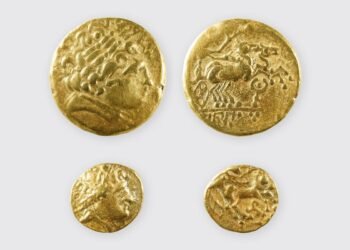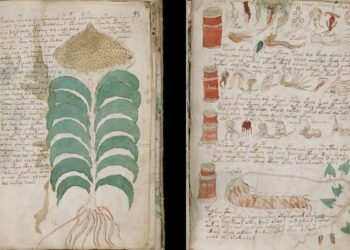An Egyptian-Italian archaeological mission has uncovered 33 family tombs from the Greco-Roman period near the Aga Khan Mausoleum in Aswan, Egypt.
The joint mission, led by Dr. Mohamed Ismail Khaled, Secretary-General of the Supreme Council of Antiquities, and Professor Patrizia Piacentini from the University of Milan, made the announcement earlier this month. The tombs, discovered west of Aswan’s Nile, date back to the Late Period and the Greco-Roman era, spanning from the sixth century BCE to the third century CE.
The Aga Khan Mausoleum, the resting place of Aga Khan III, Sir Sultan Muhammed Shah, who passed away in 1957, now sits above a necropolis with over 400 tombs. Dr. Khaled noted that it adds a new historical dimension to the Aga Khan area. The tombs vary in architectural style, with some featuring arched entrances and open courtyards made from mudbrick, while others are directly carved into the mountain rock. This diversity reflects the social stratification of the period.
Among the notable finds are mummified remains and funerary objects, including clay figures, sacrificial tables, ceramics, and painted cartonnages. An intriguing discovery within a stone coffin revealed the mummified remains of an adult and a child, likely adhered together by embalming fluids. Further analysis is planned to understand their relationship.
Anthropological and radiological studies have provided insights into the health conditions of buried individuals. Dr. Patricia Piachenti from the University of Milan noted that 30% to 40% of the deceased were infants, children, or adolescents. This high mortality rate among the young offers clues about prevalent diseases during that period. The remains of several adult women showed signs of pelvic bone trauma, suggesting childbirth complications or other medical conditions. Other mummies exhibited evidence of anemia, malnutrition, chest diseases, tuberculosis, and osteoporosis.
“Initial studies reveal that many individuals suffered from infectious diseases and bone disorders,” said Dr. Piacentini. “Some adult females showed signs of medical interventions such as amputations and bone trauma, indicating that ancient Aswan had developed some medical practices.”
Dr. Ayman Ashmawy, Head of the Egyptian Antiquities Sector, said that the lower parts of the necropolis were likely reserved for the middle-class residents of Aswan Island, including physicians, artisans, merchants, and storekeepers. The upper parts of the necropolis, however, appear to have been reserved for the wealthier upper class. This social stratification is reflected in the differing architectural styles and the types of artifacts found within the tombs.
The discoveries also include remains of colored cartonnage, clay and stone figurines, wooden coffins, and offering tables. The tombs’ architectural complexity reflects the advanced skills of the ancient craftsmen who overcame the challenges of digging into rock and constructing low-ceilinged funerary rooms and galleries.
The mission has employed the latest technology, including X-ray and CT scans, to analyze the mummies and artifacts. These technologies have allowed researchers to create three-dimensional reconstructions of the mummies and identify items such as bracelets found on some individuals.






















